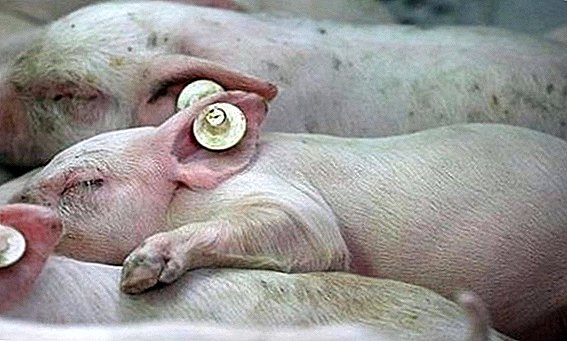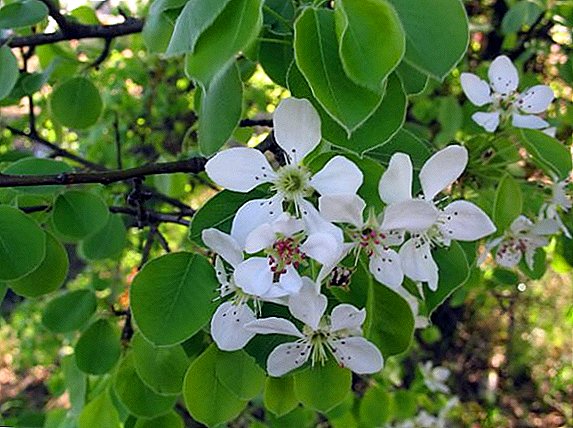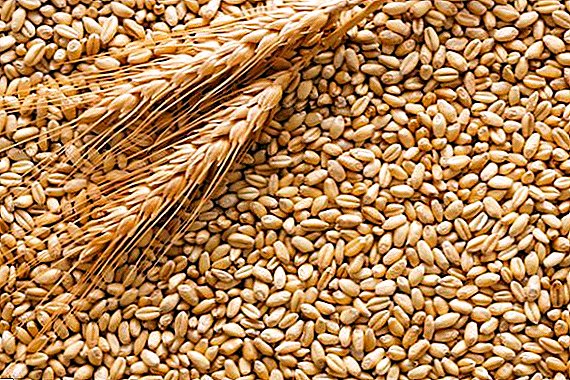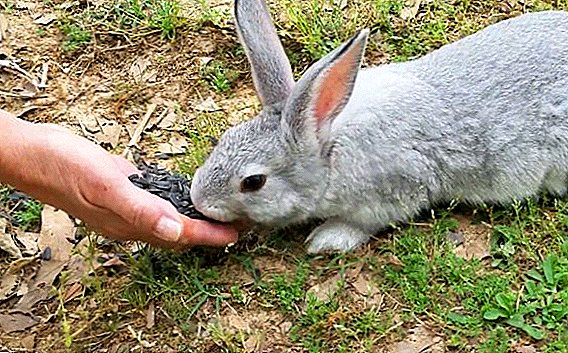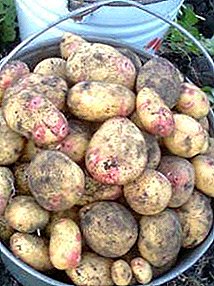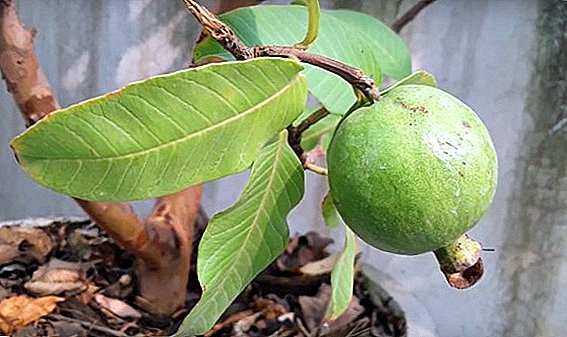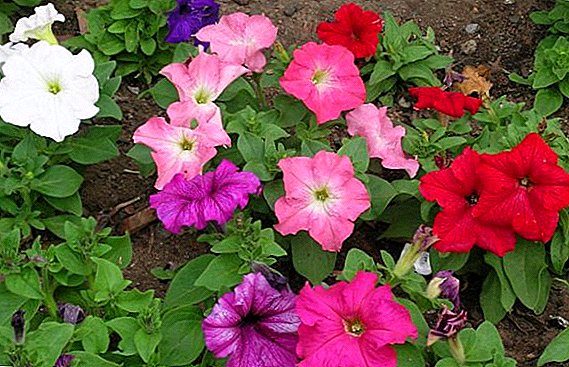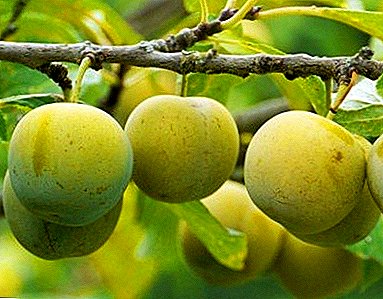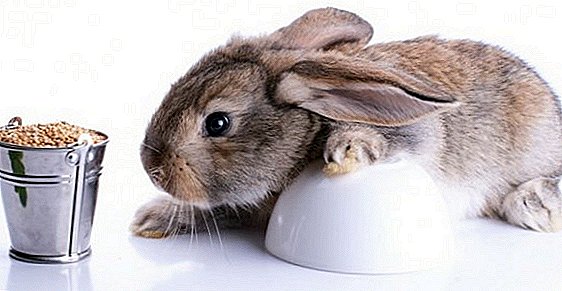 A balanced and nutritious diet is the key to good health and the rapid growth of rabbits. Cereals contain many nutrients and, along with green fodder, are the basis for feeding the animals.
A balanced and nutritious diet is the key to good health and the rapid growth of rabbits. Cereals contain many nutrients and, along with green fodder, are the basis for feeding the animals.
In addition, these feeds are quite economical, which reduces the cost of livestock rearing. Let's find out what cereals should be given to rabbits and how to eat them.
Is it possible to feed rabbits with wheat
Wheat is a basic cereal culture for rabbits, since it is an indispensable source of vitamins (especially group B) and trace elements. However, its share in the feed should be no higher than 25%, so as not to cause problems with metabolic processes and the gastrointestinal tract of animals.
In addition to high nutritional value, wheat has another advantage - abrasive properties. This contributes to the grinding of the teeth of pets during feeding and prevents their excessive sprouting.  Wheat should be given starting from 4 months: young growth in the period of growth - 10% of the total diet, adults and meat breeds - 20%.
Wheat should be given starting from 4 months: young growth in the period of growth - 10% of the total diet, adults and meat breeds - 20%.
Did you know? Since 1999, the Japanese Hironori Akutagawa has uploaded photos of his Oolong rabbit to the Network, moving with various objects on his head - a cardboard box, a piece of bread, and small fruits. Probably, this ability arose from the love of domestic rabbits to show their affection for other animals and their owners, putting their heads under their chins.
How to feed
Wheat is included in the feed of rabbits in various forms - raw, steamed and germinated.
Raw
Raw wheat animals eat quite willingly, but do not give it as a separate meal. Wheat should be included in the grain mixtures or feed. It can be given both as a whole and in crushed form. It is not used as a single food because a high content of gluten causes increased gas formation, and also the mineral ratio in the body is disturbed.  For sukrolny and lactating females and animals that are at fattening, the proportion of raw wheat in the feed can be increased. Rabbits, who still have an insufficiently adapted digestive system, feed wheat into food gradually: first, only a very small amount is given and only in crushed form. You can also use it in the form of bran, adding in easily digestible green food or mash with potatoes.
For sukrolny and lactating females and animals that are at fattening, the proportion of raw wheat in the feed can be increased. Rabbits, who still have an insufficiently adapted digestive system, feed wheat into food gradually: first, only a very small amount is given and only in crushed form. You can also use it in the form of bran, adding in easily digestible green food or mash with potatoes.
Check out the features of feeding rabbits in the winter.
In germinated form
Germinated wheat contains a number of enzymes and vitamins B, C and E, which have a beneficial effect on metabolism, the functioning of internal organs and the level of immunity of rabbits.
It is included in the diet from time to time as a vitamin supplement. Usually, this type of grain is given before mating, brood stock, and around and during lactation.  For germination should take a clean, high-quality, ripe grain without signs of mold or pests. It must not be raw or dried and older than one year after collection.
For germination should take a clean, high-quality, ripe grain without signs of mold or pests. It must not be raw or dried and older than one year after collection.
Important! Do not immediately germinate too many grains, because with the growth of the stems, the useful qualities of such food are reduced. It is also necessary to ensure that moldy or rotten shoots do not get into the food.
Steamed
Steamed grain is better absorbed by the body, because it contains less poorly digestible fiber, so it is often included in the diet of suckering and lactating individuals. It is possible to steam up not only whole, but also the crushed grain. To do this, it should be poured boiling water at the rate of 1: 2 with the addition of 1 tbsp. l salt in a bucket of wheat. The water should completely cover the grain, after which the container is tightly closed and allowed to steam for 5-6 hours.  In addition to such wheat, vitamins and premixes for rabbits are given. And at the time of fattening the animals can periodically give steamed wheat with yeast. This grain contributes to the active weight gain of animals, since up to 30% of the fiber in it is absorbed more easily.
In addition to such wheat, vitamins and premixes for rabbits are given. And at the time of fattening the animals can periodically give steamed wheat with yeast. This grain contributes to the active weight gain of animals, since up to 30% of the fiber in it is absorbed more easily.
It is useful to find out whether it is possible to feed rabbits with peas, bread, polynya, apples, pears, Jerusalem artichokes, burdocks.
For yeast, steamed crushed wheat with the addition of baker's yeast diluted in warm water is used. They should be about 1-2% of the total mass of grain. The resulting slurry must be thoroughly mixed and left to warm for 6-9 hours until cooked.
How to germinate wheat for rabbits
Step-by-step instructions for wheat germination:
- Thoroughly wash the wheat with a large volume of cool running water.
- Soak the grains with water at room temperature and leave for a day in a warm place.
- Collect and remove all grains that float to the surface of the water.
- Drain the water and spread out the swollen wheat in a small layer on a pallet, baking sheet or other flat container with low edges.
- Cover the grains with a slightly damp, clean gauze cloth and place in a warm place.
- After a few days sprouts will appear and the feed will be ready for use.

What else can feed rabbits from cereals
Cereals should take about 60% of the total diet of rabbits. However, you should not give the animals only one type of cereal, because it will lead to an excess of some trace elements and a bad impact on the health of rabbits. In addition to the grain mixture, the feed ration of animals should include branch feed, grass or hay, cake, vitamin and mineral supplements.
Important! Females during lactation should be given a cereal mixture consisting of oats and barley in equal proportions. Males producers are given mixers consisting of 25% wheat and 75% oats.
Barley
This cereal has the highest caloric content among grain crops with which rabbits are fed. It has a good effect on the digestion of animals, eliminates constipation and helps intensive weight gain.  Due to the presence of valuable amino acids in its composition, barley is given to rabbits during lactation to improve the quality of milk, as well as to young animals during the transition to a common diet. To facilitate the absorption of this cereal it is necessary to pre-grind.
Due to the presence of valuable amino acids in its composition, barley is given to rabbits during lactation to improve the quality of milk, as well as to young animals during the transition to a common diet. To facilitate the absorption of this cereal it is necessary to pre-grind.
Small rabbits are better to give a small amount of crushed barley and to coincide with the beginning of its introduction to the summer season. Barley should be given in the following proportion of the total diet: young animals in the period of growth - 15%, adults - 20%, meat breeds - 40%.
Oats
The composition of this cereal contains valuable pantothenic acid, which has a beneficial effect on the reproductive function and the general tone of the body of the rabbits.
Find out what grain is better to feed the rabbits.
Despite the rather high calorie content, oats, unlike the same corn, does not contribute to obesity. In a mixture with other grain and green fodder, the proportion of oats in the diet can reach up to 50%.  Steamed oats can be offered to the rabbit as soon as he begins to eat on his own. This cereal should be given in the following ratio to the total diet: young growth in the period of growth - 30%, adults - 40%, meat breeds - 15%.
Steamed oats can be offered to the rabbit as soon as he begins to eat on his own. This cereal should be given in the following ratio to the total diet: young growth in the period of growth - 30%, adults - 40%, meat breeds - 15%.
Did you know? Born in 1964 on the island of Tasmania, Floppy Rabbit set a life expectancy record among his kindred. Floppy lived for 18 years and 10 months and died only in 1983. However, this record can be considered beaten: today in Nova Scotia lives the future record holder, who is already 24 years old.
Corn
This culture has a high carbohydrate content, which makes it an important source of energy. As part of corn, there is a lot of vitamin E, carotene, calcium, proteins and fats, which helps active weight gain in a fairly short period of time, so you should not abuse the cereal so as not to cause obesity in animals. It is better to use it in the composition of grain mixtures with a share of not more than 25% of the total mass. In addition, for better absorption of grain, it is recommended to pre-grind it.  Corn should be given to individuals who have reached four months, in the following proportion of the total diet: young growth in the period of growth - 30%, adults - 10%, meat breeds - 15%.
Corn should be given to individuals who have reached four months, in the following proportion of the total diet: young growth in the period of growth - 30%, adults - 10%, meat breeds - 15%.
Read more about the features of feeding rabbits with corn.
Alternating and combining different cereal crops, you can provide your pet with a nutritious and varied diet. This will saturate them with all the necessary vitamins and elements and allow them to grow large, strong and healthy.



